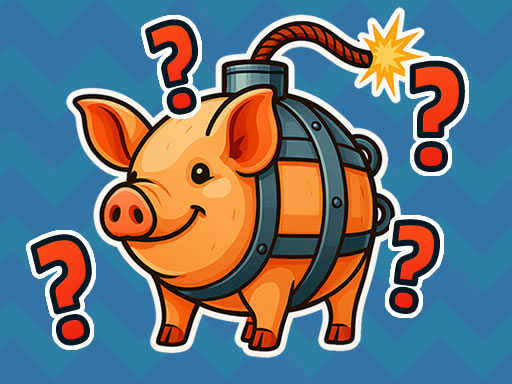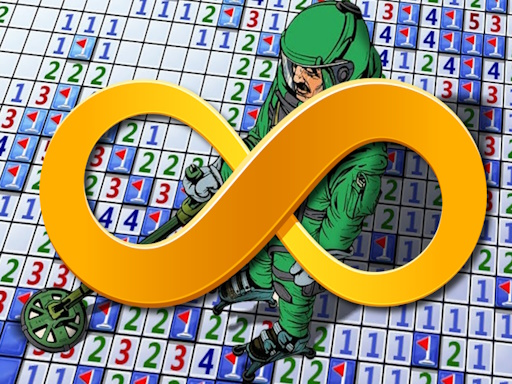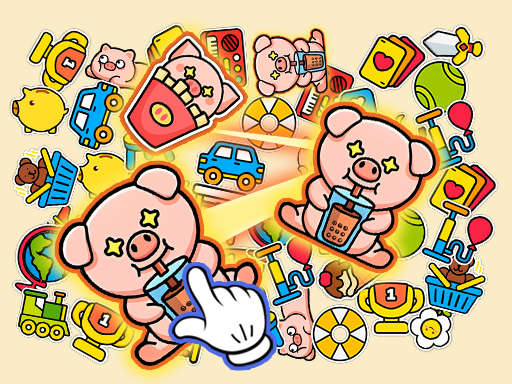Spatial Connect 3D
About Spatial Connect 3D
Okay, so you know how sometimes you just stumble onto a game, completely out of the blue, and it just… clicks? Like, it resonates with some part of your brain you didn’t even know was waiting for *that exact thing*? That’s exactly what happened to me with Spatial Connect 3D, and honestly, I haven’t been able to stop thinking about it since. I’ve always been drawn to games that demand a certain kind of focus, something that makes you lean forward in your chair, almost physically feeling the mental gears turning. And this, my friend, this is it. This is that game.
Imagine this: you’re dropped into this really clean, almost minimalist 3D space. It’s not stark, though; there’s a subtle ambient glow, a kind of soft, inviting hum that just immediately puts you in the zone. And then, there it is – a ghost of a shape, shimmering faintly in the center. It could be anything at first, maybe a simple cube, or a pyramid, or something much more intricate, a tangle of lines and planes that makes your brain do a little double-take. Your tool? A pencil. Not a physical one, obviously, but you can almost feel the weight of it in your virtual hand, the precise control it offers.
The core idea, right, is that you have to guide this pencil, this incredibly precise virtual instrument, to trace the outlines of these 3D shapes. But it’s not just a flat drawing. Oh no. This is where the magic happens. You’re not just drawing *on* a screen; you’re drawing *through* a fully interactive 3D environment. You can rotate the shape, zoom in, pull back, tilt it – all with this fluid, intuitive control that just feels so natural. And you *have* to do it. You have to constantly manipulate your perspective, because the line you need to trace might disappear behind another plane, or it might curve in a way that only makes sense from a specific angle.
What’s fascinating is how quickly your brain adapts to this. At first, you’re fumbling a bit, trying to get the hang of rotating the shape while simultaneously guiding your pencil. But then, something shifts. You start to anticipate the curves, to instinctively know when you need to pivot the entire structure to get that perfect, unbroken line. There’s this incredible satisfaction, a real visceral *thump* in your chest, when you nail a long, complex segment without a single wobble. The pencil glides, leaving behind this vibrant, solid line, contrasting beautifully with the ghostly outline that remains. You can almost hear a subtle, satisfying *click* as each segment locks into place.
And that’s where the "precision" and "hand-eye coordination" really come into play. It’s not just about getting *close* to the line; it’s about absolute accuracy. Every slight deviation, every little tremor in your virtual hand, is registered. You’re constantly challenging your focus, trying to maintain that laser-like concentration. What I love about games like this is that they’re not about speed or brute force. They’re about patience, about observation, about a quiet, intense mastery. It’s like a meditation, almost. You get into this flow state where the outside world just… fades away. You’re just you, the pencil, and that evolving 3D shape.
The levels start off deceptively simple, as they always do, right? A basic cube, a sphere. You think, "Okay, I got this." But then, they start throwing these absolute brain-teasers at you. Shapes that interlock, outlines that seem to defy logic from certain angles, structures that require you to trace a path *inside* them before you can complete the exterior. The brilliant thing about this is that it’s not just about tracing; it’s about understanding the geometry. You’ll find yourself mentally deconstructing these complex forms, visualizing the path of the pencil before you even commit to a line. It’s a genuine test of spatial awareness, and honestly, it’s exhilarating when a particularly tricky section finally clicks into place. That moment when you’ve been rotating the shape for what feels like ages, trying to find the perfect vantage point, and then suddenly, *there it is* – the angle reveals the hidden path, and you just know exactly what you need to do. That’s pure gaming joy, right there.
There’s something magical about how the game makes you feel so connected to the act of creation. As you complete each segment, the ghostly outline solidifies, gaining color and depth. By the time you’ve finished the entire shape, it’s transformed from this ethereal blueprint into a vibrant, tangible object. And the visuals are just so satisfying. The lines are crisp, the colors are clean, and the way light plays off the newly formed surfaces is just beautiful. It’s not flashy, it’s elegant. It’s the kind of visual reward that feels earned, a testament to your focus and precision.
In my experience, the best moments come when you’re presented with a shape that initially looks impossible. You stare at it, you rotate it, you try a few tentative lines, maybe make a mistake and have to restart a segment. There’s a touch of frustration, sure, but it’s the good kind of frustration, the kind that makes victory sweeter. You keep experimenting, keep shifting your perspective, and then, slowly, piece by piece, the puzzle unravels. The tension builds as you get closer to completing the final line, knowing that one wrong move could mean redoing a whole section. But when that last line snaps into place, and the entire shape glows with a final, triumphant flourish? Oh man, that feeling. It’s like hitting a perfect headshot in an FPS, or pulling off a flawless combo in a fighting game, but for your brain. It’s that pure, unadulterated satisfaction of mastering a difficult skill.
You know, I’ve always been drawn to games that feel like they’re actually making me smarter, or at least sharpening my cognitive abilities. And Spatial Connect 3D absolutely does that. It’s not just a time-killer; it’s brain training disguised as incredibly engaging gameplay. It pushes your focus, hones your accuracy, and genuinely improves your ability to visualize and manipulate objects in three dimensions. And it does it all without ever feeling like homework. It’s just pure, unadulterated puzzle-solving bliss.
The sound design, too, is subtle but perfect. There’s that gentle hum of the environment, the satisfying *zzzip* as your pencil draws a perfect line, the soft chime when a segment is completed. It all contributes to this incredibly immersive, almost meditative experience. You really do lose track of time. I’ve sat down for "just a few levels" and suddenly looked up to realize an hour or more has vanished. That’s the hallmark of a truly great game, isn’t it? One that completely absorbs you, pulls you into its world, and makes you forget everything else.
Honestly, if you’re a fan of drawing games, if you appreciate a good brain-teaser, or if you just love the tactile satisfaction of a perfectly executed task in a beautiful 3D environment, you absolutely have to check this out. It’s not just a game; it’s an experience. It’s that rare gem that combines artistic expression with rigorous logical challenge, and it delivers on both fronts with such elegance. Just wait until you encounter some of the later levels, the ones that make you gasp a little, wondering how you’re ever going to untangle them. The real magic happens when you realize you *can*, and you do, and it feels incredible. It’s truly something special, and I genuinely think you’d love it.
Imagine this: you’re dropped into this really clean, almost minimalist 3D space. It’s not stark, though; there’s a subtle ambient glow, a kind of soft, inviting hum that just immediately puts you in the zone. And then, there it is – a ghost of a shape, shimmering faintly in the center. It could be anything at first, maybe a simple cube, or a pyramid, or something much more intricate, a tangle of lines and planes that makes your brain do a little double-take. Your tool? A pencil. Not a physical one, obviously, but you can almost feel the weight of it in your virtual hand, the precise control it offers.
The core idea, right, is that you have to guide this pencil, this incredibly precise virtual instrument, to trace the outlines of these 3D shapes. But it’s not just a flat drawing. Oh no. This is where the magic happens. You’re not just drawing *on* a screen; you’re drawing *through* a fully interactive 3D environment. You can rotate the shape, zoom in, pull back, tilt it – all with this fluid, intuitive control that just feels so natural. And you *have* to do it. You have to constantly manipulate your perspective, because the line you need to trace might disappear behind another plane, or it might curve in a way that only makes sense from a specific angle.
What’s fascinating is how quickly your brain adapts to this. At first, you’re fumbling a bit, trying to get the hang of rotating the shape while simultaneously guiding your pencil. But then, something shifts. You start to anticipate the curves, to instinctively know when you need to pivot the entire structure to get that perfect, unbroken line. There’s this incredible satisfaction, a real visceral *thump* in your chest, when you nail a long, complex segment without a single wobble. The pencil glides, leaving behind this vibrant, solid line, contrasting beautifully with the ghostly outline that remains. You can almost hear a subtle, satisfying *click* as each segment locks into place.
And that’s where the "precision" and "hand-eye coordination" really come into play. It’s not just about getting *close* to the line; it’s about absolute accuracy. Every slight deviation, every little tremor in your virtual hand, is registered. You’re constantly challenging your focus, trying to maintain that laser-like concentration. What I love about games like this is that they’re not about speed or brute force. They’re about patience, about observation, about a quiet, intense mastery. It’s like a meditation, almost. You get into this flow state where the outside world just… fades away. You’re just you, the pencil, and that evolving 3D shape.
The levels start off deceptively simple, as they always do, right? A basic cube, a sphere. You think, "Okay, I got this." But then, they start throwing these absolute brain-teasers at you. Shapes that interlock, outlines that seem to defy logic from certain angles, structures that require you to trace a path *inside* them before you can complete the exterior. The brilliant thing about this is that it’s not just about tracing; it’s about understanding the geometry. You’ll find yourself mentally deconstructing these complex forms, visualizing the path of the pencil before you even commit to a line. It’s a genuine test of spatial awareness, and honestly, it’s exhilarating when a particularly tricky section finally clicks into place. That moment when you’ve been rotating the shape for what feels like ages, trying to find the perfect vantage point, and then suddenly, *there it is* – the angle reveals the hidden path, and you just know exactly what you need to do. That’s pure gaming joy, right there.
There’s something magical about how the game makes you feel so connected to the act of creation. As you complete each segment, the ghostly outline solidifies, gaining color and depth. By the time you’ve finished the entire shape, it’s transformed from this ethereal blueprint into a vibrant, tangible object. And the visuals are just so satisfying. The lines are crisp, the colors are clean, and the way light plays off the newly formed surfaces is just beautiful. It’s not flashy, it’s elegant. It’s the kind of visual reward that feels earned, a testament to your focus and precision.
In my experience, the best moments come when you’re presented with a shape that initially looks impossible. You stare at it, you rotate it, you try a few tentative lines, maybe make a mistake and have to restart a segment. There’s a touch of frustration, sure, but it’s the good kind of frustration, the kind that makes victory sweeter. You keep experimenting, keep shifting your perspective, and then, slowly, piece by piece, the puzzle unravels. The tension builds as you get closer to completing the final line, knowing that one wrong move could mean redoing a whole section. But when that last line snaps into place, and the entire shape glows with a final, triumphant flourish? Oh man, that feeling. It’s like hitting a perfect headshot in an FPS, or pulling off a flawless combo in a fighting game, but for your brain. It’s that pure, unadulterated satisfaction of mastering a difficult skill.
You know, I’ve always been drawn to games that feel like they’re actually making me smarter, or at least sharpening my cognitive abilities. And Spatial Connect 3D absolutely does that. It’s not just a time-killer; it’s brain training disguised as incredibly engaging gameplay. It pushes your focus, hones your accuracy, and genuinely improves your ability to visualize and manipulate objects in three dimensions. And it does it all without ever feeling like homework. It’s just pure, unadulterated puzzle-solving bliss.
The sound design, too, is subtle but perfect. There’s that gentle hum of the environment, the satisfying *zzzip* as your pencil draws a perfect line, the soft chime when a segment is completed. It all contributes to this incredibly immersive, almost meditative experience. You really do lose track of time. I’ve sat down for "just a few levels" and suddenly looked up to realize an hour or more has vanished. That’s the hallmark of a truly great game, isn’t it? One that completely absorbs you, pulls you into its world, and makes you forget everything else.
Honestly, if you’re a fan of drawing games, if you appreciate a good brain-teaser, or if you just love the tactile satisfaction of a perfectly executed task in a beautiful 3D environment, you absolutely have to check this out. It’s not just a game; it’s an experience. It’s that rare gem that combines artistic expression with rigorous logical challenge, and it delivers on both fronts with such elegance. Just wait until you encounter some of the later levels, the ones that make you gasp a little, wondering how you’re ever going to untangle them. The real magic happens when you realize you *can*, and you do, and it feels incredible. It’s truly something special, and I genuinely think you’d love it.
Enjoy playing Spatial Connect 3D online for free on Qotori games. This Puzzle game offers amazing gameplay and stunning graphics. No downloads required, play directly in your browser!
How to Play
Mouse click or tap to play





Comments
This game is awesome! I love the graphics and gameplay.
One of the best games I've played recently. Highly recommended!